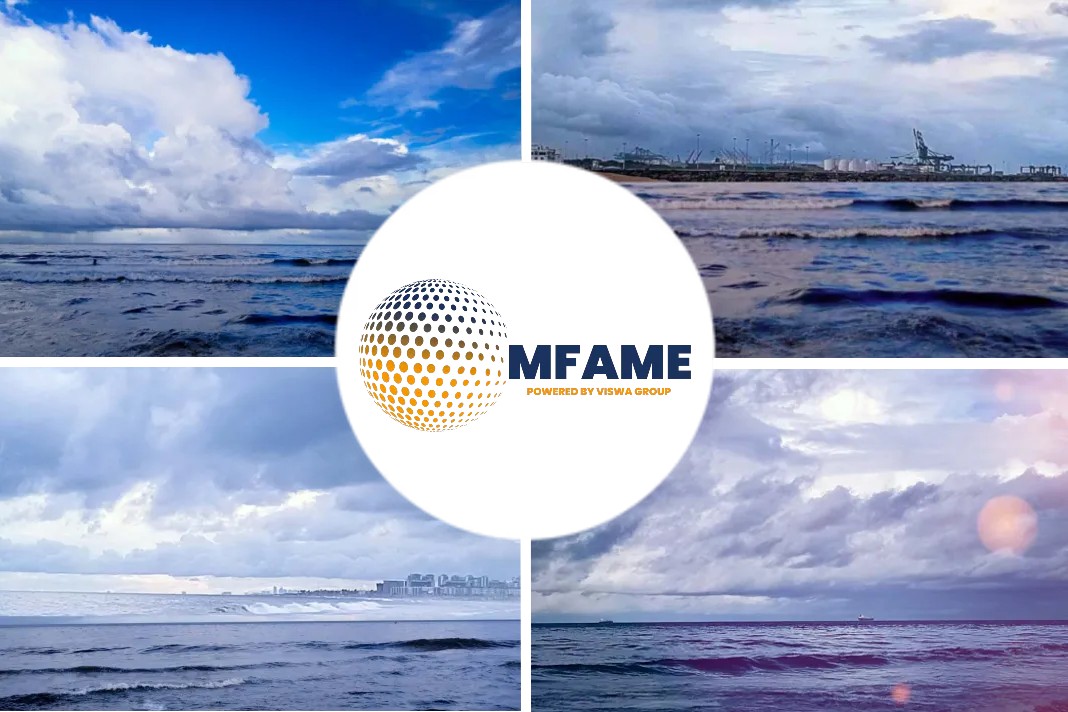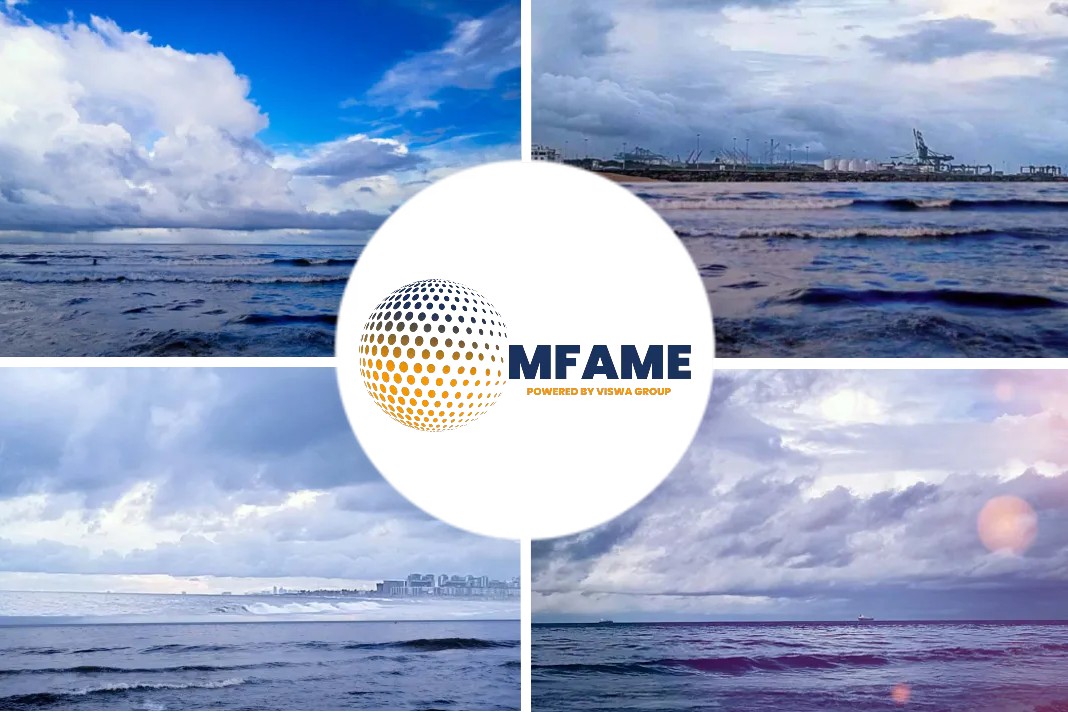BLOCKCHAIN, the industry wants trust and transparency in supply chains. That is the simple conclusion as ocean carriers representing almost two thirds of global container freight are set to join the digital platform, TradeLens – a potential game changer in the digitisation of global trade, writes Jesper Toft Madsen in his Blockchain article as published on Maersk website.
A Seamless Custom Clearance Flow
Imagine a digital process where documents for customs clearance flow seamlessly between the involved parties at import and export. They are visible to everyone with guaranteed immutability, privacy and auditability of all the information.
This was the goal of a recent pilot shipment with Saudi Customs. The pilot demonstrated how blockchain technology through improved trust and transparency in handling data delivered efficiencies that saved their clients valuable time and money.
TradeLens and Global Trade Complexity
“Global trade is incredibly complex. With TradeLens, we want to create an unprecedented level of transparency that enables supply chain players to respond almost instantly to unpredicted changes and at the same time facilitate industry-wide innovation,” explains Lars Kastrup, Head of Sales for TradeLens at Maersk.
The blockchain-powered digital shipping platform was launched together with IBM in 2018 to help modernise global supply chains. Many of the processes for transporting and trading goods are costly, in part, due to manual and paper-based systems.
Replacing these peer-to-peer and often unreliable information exchanges, the platform enables participants to digitally connect, share information in near real time and collaborate across the supply chain within a secured space.
Covering the whole ecosystem
From the beginning, global industry players have shown an interest in the platform, from port authorities and terminal operators to customs brokers and inland service providers. However, it is not until this year that TradeLens has gained much needed commitments from major ocean carriers.
“We have explained how data security and structure works in the platform business model and this helped convince them,” shares Kastrup.
In May, the first major shipping lines CMA CGM and MSC announced that they would join the platform. More recently, Hapaq-Lloyd and Ocean Network Express followed suit. As a result, data from close to two thirds of global container volumes are committed to the platform.
“The rapid adoption this year reflects genuine buy-in to the platform from large chunks of the ecosystem. It also validates the value of TradeLens as an open and neutral platform that creates trust, transparency and collaboration,” says Kastrup.
With the recent additions, five out of the world’s six largest shipping companies look set to join the platform. This momentum will help drive further adoption around the world as customers will have access to information from major carriers in all three leading, global vessel-sharing alliances.
The potential of paperless trade
One of the biggest supply chain challenges is that systems and processes have not been able to keep track with therapidly growing complexity of global trade.
With the current momentum, TradeLens has the potential to digitise supply chains and drive the industry towards paperless trade. For Maersk, this means that the platform can become a driver in the digital transformation and help fulfill its ambition of offering end-to-end transport and logistics solutions.
“We have a golden opportunity to digitise and standardise processes across the industry. The blockchain technology is there and if we succeed, it will lead to huge cost savings that will benefit not only supply chain actors like Maersk, but also customers and consumers worldwide,” adds Kastrup.
How Blockchain Generates Revenue?
Over time, TradeLens could generate a variety of new revenue streams as more services are developed and added onto the platform to cover customers’ end-to-end needs. This also serves as a potential boost to the growth of non-ocean logistics products and services as the platform expandsits end-to-end visibility.
Based off positive pilots with customs in Saudi Arabia and also Canada, the TradeLens team is turning its attention towards attracting more government authorities and engaging in partnerships with customs authorities to work towards removing friction in global trade.
We have a golden opportunity to digitise and standardise processes across the industry. The blockchain technology is there and if we succeed, it will lead to huge cost savings that will benefit not only supply chain actors like Maersk, but also customers and consumers worldwide
How TradeLens works?
TradeLens is based on three key components:
Ecosystem: The foundation of TradeLens is its business network — shippers, freight forwarders, ports and terminals, ocean carriers, intermodal operators, government authorities, customs brokers and more. They share information across the platform throughout a shipment’s journey.
Platform: The platform is accessible via an open API and brings together the ecosystem through a set of open standards. Powered by blockchain technology and IBM Cloud, the platform enables the industry to share information and collaborate securely.
Applications and Services: An open marketplace with applications and services allows both TradeLens and third parties to publish fit-for purpose services atop the TradeLens platform, fostering supply chain innovation and value creation.
Customers use TradeLens through the applications and services layer. These apps will be built by TradeLens, third party software providers, Maersk or by customers themselves, creating tailor-made solutions to solve business problems.
The value of blockchain technology
The attributes of blockchain technology are ideally suited for large networks of disparate partners, particularly in eliminating complex paper-based or manual processes. Blockchain establishes a digitised, shared, immutable record of all the transactions that take place within a network and enables permissioned parties to access to secured data in real time.
Key facts
- The TradeLens ecosystem is comprised of over 100 diverse organisations
- More than 10 million shipping events are registered every week
- 55 ports and terminals are pushing data to TradeLens
- Almost a dozen customs authorities are engaged to improve visibility, security and automation of customs clearance
- Data from up to 600 ports and terminals is captured by existing TradeLens members
Did you subscribe to our daily newsletter?
It’s Free! Click here to Subscribe!
Source: Maersk



















![[Watch] A Video on the 2,000 Pounds Cocaine Haul Seized on Miami River](https://mfame.guru/wp-content/uploads/2016/06/VOD-3-696x385.jpg)

